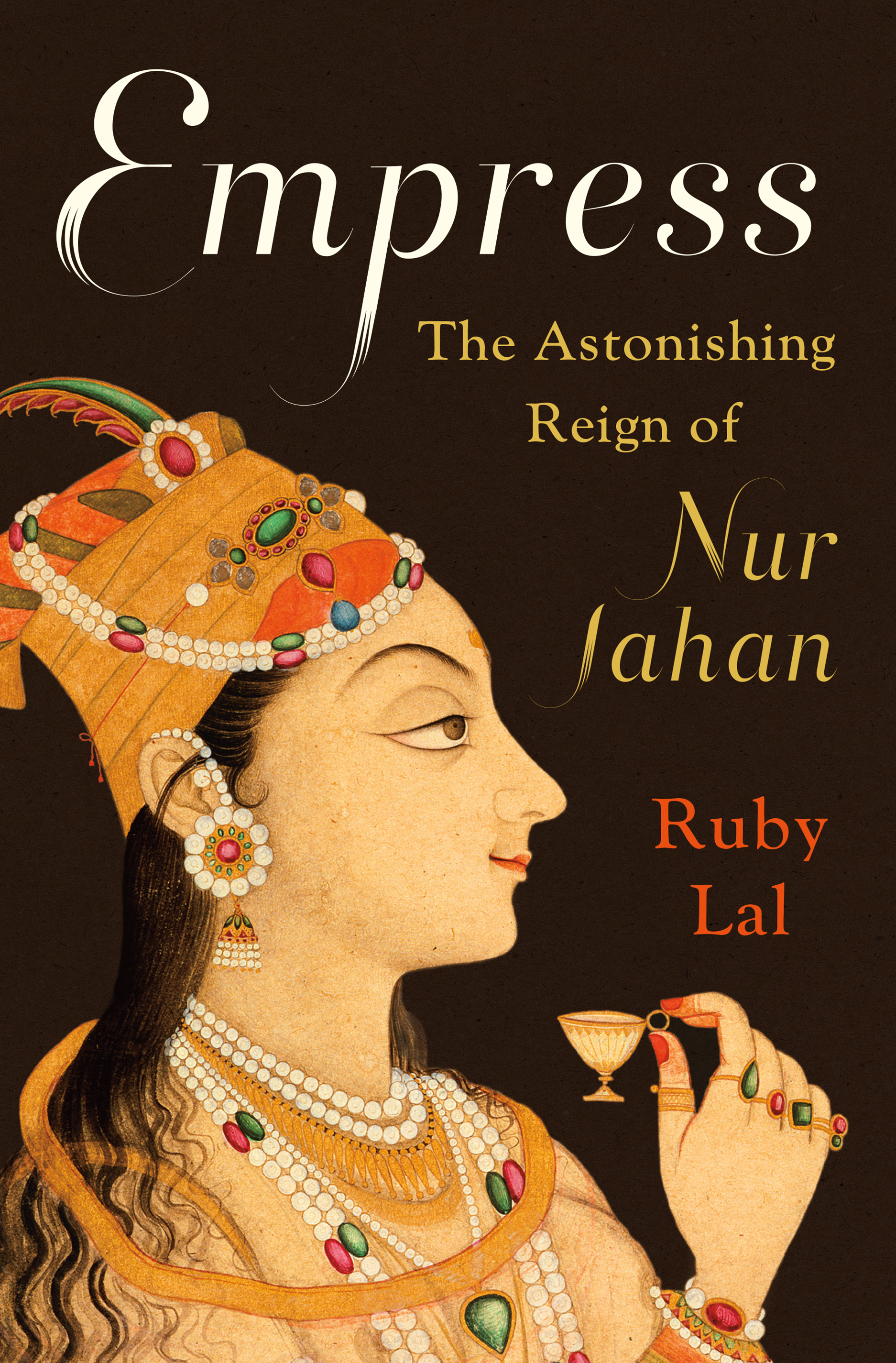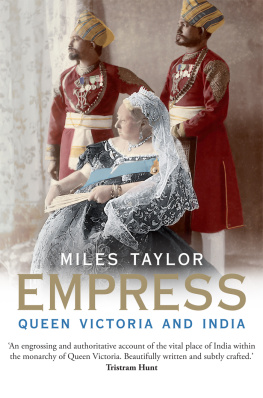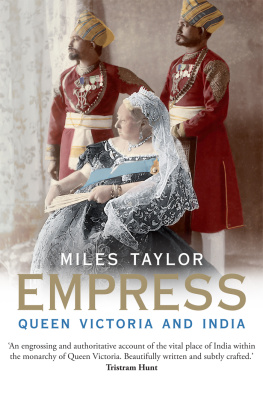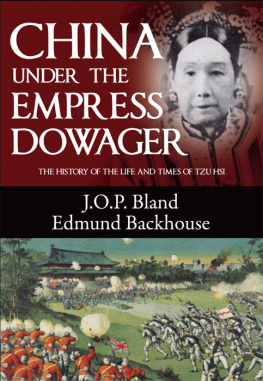Ruby Lal - Empress: The Astonishing Reign of Nur Jahan
Here you can read online Ruby Lal - Empress: The Astonishing Reign of Nur Jahan full text of the book (entire story) in english for free. Download pdf and epub, get meaning, cover and reviews about this ebook. City: New York, year: 2018, publisher: W. W. Norton & Company, genre: Non-fiction. Description of the work, (preface) as well as reviews are available. Best literature library LitArk.com created for fans of good reading and offers a wide selection of genres:
Romance novel
Science fiction
Adventure
Detective
Science
History
Home and family
Prose
Art
Politics
Computer
Non-fiction
Religion
Business
Children
Humor
Choose a favorite category and find really read worthwhile books. Enjoy immersion in the world of imagination, feel the emotions of the characters or learn something new for yourself, make an fascinating discovery.

- Book:Empress: The Astonishing Reign of Nur Jahan
- Author:
- Publisher:W. W. Norton & Company
- Genre:
- Year:2018
- City:New York
- Rating:5 / 5
- Favourites:Add to favourites
- Your mark:
- 100
- 1
- 2
- 3
- 4
- 5
Empress: The Astonishing Reign of Nur Jahan: summary, description and annotation
We offer to read an annotation, description, summary or preface (depends on what the author of the book "Empress: The Astonishing Reign of Nur Jahan" wrote himself). If you haven't found the necessary information about the book — write in the comments, we will try to find it.
Ruby Lal: author's other books
Who wrote Empress: The Astonishing Reign of Nur Jahan? Find out the surname, the name of the author of the book and a list of all author's works by series.
Empress: The Astonishing Reign of Nur Jahan — read online for free the complete book (whole text) full work
Below is the text of the book, divided by pages. System saving the place of the last page read, allows you to conveniently read the book "Empress: The Astonishing Reign of Nur Jahan" online for free, without having to search again every time where you left off. Put a bookmark, and you can go to the page where you finished reading at any time.
Font size:
Interval:
Bookmark:

Empress
THE ASTONISHING REIGN OF NUR JAHAN

Ruby Lal

W. W. NORTON & COMPANY
Independent Publishers Since 1923
New York | London
Coming of Age in Nineteenth-Century India:
The Girl-Child and Art of Playfulness
Domesticity and Power in the Early Mughal World
Copyright 2018 by Ruby Lal
All rights reserved
First Edition
For information about permission to reproduce selections from this book, write to Permissions, W. W. Norton & Company, Inc., 500 Fifth Avenue, New York, NY 10110
For information about special discounts for bulk purchases, please contact W. W. Norton Special Sales at specialsales@wwnorton.com or 800-233-4830
Book design by Chris Welch
Production manager: Anna Oler
JACKET DESIGN: Chin-Yee Lai
JACKET ART: Idealized portrait of the Mughal empress Nur Jahan (15771645), ca. 17251750. India, Rajasthan, Kishangarh. Watercolor, opaque watercolor and gold on paper; 11 5/8 8 1/2 in. (29.52 21.59 cm). Gift of Diandra and Michael Douglas (M.81.271.7). Digital image 2018 Museum Associates / LACMA. Licensed by Art Resource, NY.
ISBN: 978-0-393-23934-8
ISBN: 978-0-393-63540-9 (e-book)
W. W. Norton & Company, Inc., 500 Fifth Avenue, New York, N.Y. 10110
www.wwnorton.com
W. W. Norton & Company Ltd., 15 Carlisle Street, London W1D 3BS
To the Ancestors of Indias Women
And to Our Plural Heritage
Akbar: the third Great Mughal emperor, son of Humayun
Babur: the first Great Mughal emperor
Dawar Bakhsh: Mughal ruler with the shortest reign, son of Khusraw, used to forestall Shahryars bid for the crown
Humayun: the second Great Mughal emperor, son of Babur
Jahangir (n Prince Salim): the fourth Great Mughal emperor, co-sovereign with Nur Jahan
Nur Jahan (ne Mihr un-Nisa): co-sovereign with Jahangir, the first and only female ruler of the Mughal Empire
Shah Jahan (n Khurram): the fifth Great Mughal emperor, son of Jahangir, rebelled against his father
Arjumand Banu (Mumtaz Mahal): wife of Shah Jahan, in whose memory the Taj Mahal was built
Asmat Begum: Nur/Mihrs mother
Dai Dilaram: Nur/Mihrs wet nurse and mentor, prominent harem officer
Gulbadan Banu Begum: daughter of Babur, led a royal womens pilgrimage to Mecca, author of the Ahval-i Humayun Badshah
Hamideh Banu Begum: revered mother of Emperor Akbar
Jagat Gosain: mother of Shah Jahan, rival of Nur Jahan
Ladli Begum: only daughter of Nur Jahan and Sher Afgan, married Shahryar
Ruqayya Begum: Akbars childless wife, key matriarchal figure for Mihr/Nur as well as Jahangir
Salimeh Sultan Begum: senior wife of Akbar and later mentor to Mihr/Nur
Asaf Khan (n Abul-Hasan): son of Ghiyas Beg, brother of Empress Nur, father of Arjumand Banu, loyalist of Shah Jahan
Ghiyas Beg (Itimad ud-Daula): Nur/Mirs father, wazir of the Mughal Empire under Jahangir
Jadrup: Vaishnavite ascetic and spiritual mentor of Jahangir
Khusraw: Jahangirs eldest son, rebelled against his father
Mahabat Khan (n Zamana Beg): fought to quell Prince Khusraws rebellion, then turned against Jahangir, kidnapping him
Shahryar: son of Jahangir, married Ladli and was favored to rule by Nur, as opposed to Shah Jahan
Sher Afgan (n Ali Quli): Mihr/Nurs first husband, a functionary under Akbar
Abdal-Qadir Badauni: historian at Akbars court
Abdur-Rahim Khan-i Khanan: poet, military general and translator of the Baburnama, loyalist of Jahangir
Abul-Hasan: painter and portraitist favored by Jahangir
Farid Bhakkari: financial officer in the time of Jahangir, author of Dhakhiratul Khawanin
Khafi Khan (Hashim Ali Khan): military figure and chronicler of the Mughal Empire, author of Muntakhab-ul Lubab
Niccolao Manucci: military figure, quack doctor, and author of Storia Do Mogor
Muhammad Hadi: contemporary of Aurangzeb, contributed late sections of Jahangirnama
Mulla Kami Shirazi: poet whose works celebrate the life of Nur Jahan
Mutamad Khan: Jahangirs paymaster of troopers and memoirist
Sir Thomas Roe: British ambassador to Mughal India who wrote a detailed account of the empire
Empress



I n the autumn of 1619, when the days were clear and cool, perfect for travel, the royal cavalcade of Emperor Jahangir and Empress Nur Jahan, his twentieth and favorite wife, set out from Agra, the capital of Mughal India, headed for the Himalayan foothills. The people of Mathura, a popular pilgrimage site along the emperors route, were anxious for his arrival. For months, a tiger had been attacking villagers and visitors, then disappearing into the forest, evading local hunters. No divine intervention seemed to be forthcoming from Lord Krishna and his consort Radha, the Hindu deities worshipped in Mathuras temples. But the emperor could solve the problem. Killing tigers had long been a royal prerogative.
Jahangirhis name meant Conqueror of the World in Persian, the language of the courtwas the fourth of the Mughal emperors, a Muslim dynasty established by invasion early in the sixteenth century. Descendants of the Central Asian nomad kings Chingiz [Genghis] Khan and Tamerlane, the Mughals ruled much of Hindu-majority India for more than three hundred years.
According to one excited observer, the imperial procession included fifteen hundred thousand peoplemen, women, and children; courtiers, soldiers, and servantsalong with ten thousand elephants and a great deal of artillery. The procession halted near Mathura, and attendants began erecting hundreds of magnificent tents, with the harem quarters marked with intricately carved red screens. While the traveling court was still being set up, a group of local huntsmen appeared and begged Jahangir to do something about the tiger.
Unfortunately, the emperor was obligated to decline. Several years before, Jahangir had taken a vow to give up hunting when he turned fifty. After that, hed promised Allah, he would injure no living being with his own hands. He was two months past that milestone birthday, and had recently renewed the vow as an offering on behalf of a favorite four-year-old grandson, traveling with him, who suffered from epilepsy. Shooting a tiger was now out of the question for Jahangir. The empress, however, was there to protect her subjects.
Beautiful and accomplished, Nur Jahan was the daughter of nobles whod fled persecution in Persia. She was also the widow of a court official implicated in a plot against Jahangir, but that didnt stop the emperor from falling hard for her. She was thirty-four when they married, nearly middle-aged in the Mughal world. Since their wedding in 1611, the same year that Shakespeare premiered
Font size:
Interval:
Bookmark:
Similar books «Empress: The Astonishing Reign of Nur Jahan»
Look at similar books to Empress: The Astonishing Reign of Nur Jahan. We have selected literature similar in name and meaning in the hope of providing readers with more options to find new, interesting, not yet read works.
Discussion, reviews of the book Empress: The Astonishing Reign of Nur Jahan and just readers' own opinions. Leave your comments, write what you think about the work, its meaning or the main characters. Specify what exactly you liked and what you didn't like, and why you think so.






